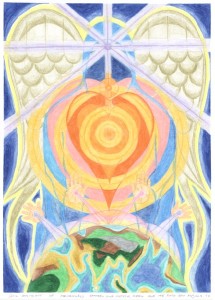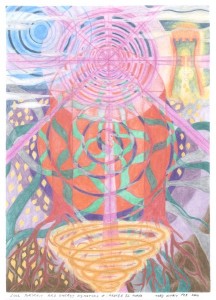 In my previous article on the five types of romantic love I placed the dynamic of romantic love in a larger context, to include our relationship not just with other people, but also ourself, the world/the Universe, landscape and our “art” or work.
In my previous article on the five types of romantic love I placed the dynamic of romantic love in a larger context, to include our relationship not just with other people, but also ourself, the world/the Universe, landscape and our “art” or work.
What I want to do in this next few articles is have a look at four basic stages that any romantic relationship needs to go through in order to connect us to deep levels of authentic passion and creativity.
When I talk of passion and creativity here I am not referring just to a temporary increase in our creative energy, but a connection to deeper life forces that is continuously sustained over a long period of time.
The four stages of romantic love as I have named them are:
- Attraction and desire
- Relationship
- Union
- Creativity
In the article below we will begin by looking at stage 1, attraction and desire. I will focus mainly on the relationship between two people, but bear in mind that it can apply to the other four types of romantic experience as well.
Stage 1: Attraction and desire
Romantic attraction and desire are often seen as the antithesis of the pure, spiritual experience of love. However, if you look at the state of mind that you enter into when you first “fall in love” with a person, a place or a type of work or art, you will be able to see that it has many magical and spiritual qualities. For example
- The whole world seems more alive and vivid
- You seem to be in a kind of telepathic communication with the person you are romantically involved with
- Daily problems and anxieties fall away
- You have more energy
- There is a natural sense of timelessness which is in fact connected to the timeless world of spirit
Attraction and desire are the starting point for ANY romantic relationship, whether the couple are on a high level of consciousness or a low one. Attraction and desire are as natural as breathing and eating for us!
(those last two lines are my answer to the question posed by the title of this article by the way!)
One of the keys to successfully negotiating and enjoying this period of intense attraction and desire is to look closely at the motivations behind your attraction and desire.
- If you feel attracted to a person because you feel a glaring LACK or POVERTY within yourself, then it is likely that the attachment and desire is going to lead to experiences of pain and suffering in the next stage of the romance.
- If you fall into an attraction and desire for someone even though you feel a comfortable sense of FULLNESS and ABUNDANCE within yourself, then it is likely that you will be able to transition to the next stage of the romance where “reality sets back in” without too much problem.
Exercise for appreciating and enjoying desire and attraction
Recall a time when you were in love with someone for the first time (or if you are at that stage in your relationship now, look at what you are experiencing now). Spend a while re-creating the feelings and experiences associated with that time. Creatively imagine your way back into the feeling and texture of your mind, body and emotions at that time. Breathe with it and enjoy it for a while.
Now let go of the specifics of the romance. Forget about the person you were with, the time, the place and so on. Just focus on the essence or essential feeling that is left inside. Breathe with this for a while.
What you will find if you do this is that experiences of desire and attraction lead us quite naturally into a mystical, enraptured, timeless state of consciousness. Most of the time we fail to capitalize on this because we mistake the object of our desire for the STATE OF MIND that he/she evokes. However, if you can let go of the object of your desire and focus on the state of BEING that has been evoked in you, you will find yourself connecting to something timeless, universal and full of life-force…
© Toby Ouvry 2010. You are welcome to use this article, but you MUST seek Toby’s permission first! Contact info@tobyouvry.com
